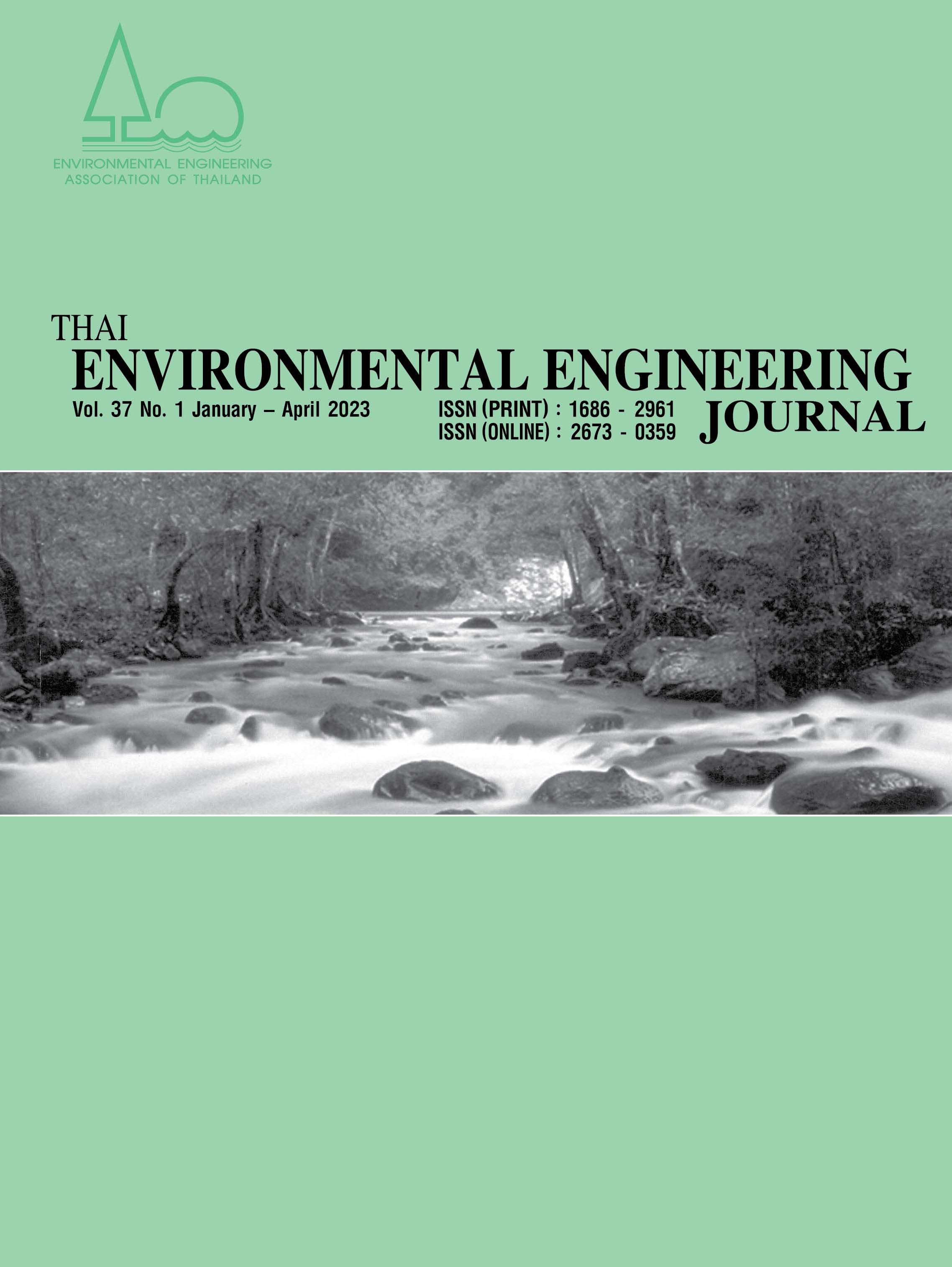Development of Pedestrian Walkways Model for the City Nucleus of Bangkok, Thailand
Main Article Content
Abstract
The research of the Pedestrian Walkways Model for the City Nucleus of Bangkok presents a criteria for creating an infrastructure based on people's engagement in expressing their opinions and requirements for example, adequate pedestrian width, safety when walking on the sidewalk, the cleanliness of the pavement and shady environment. This research uses qualitative research, observation procedures, and collecting data from 400 sets of multiple choice questionnaires for documentary studies to analyze fundamental data. This study shows that people's needs can be divided into 3 groups: 1) The safety of pedestrians which concern on install a crossing signal for maximum safety, 2) The environment of pedestrians which concern on appropriate cleaning policy for pedestrian walkways, and 3) The comfort of pedestrians which concern on utilities should be maintained in a systematic manner. Even in most developing nations, typical pedestrian walkway designs and the concept of involvement in expressing attitudes and needs not only respond to demand use but may also maintain political stability.
Article Details
References
Visvizi , A., Abdel‐Razek, S.A.,Wosiek, R. and Malik, R. 2021,Conceptualizing Walking and Walkability in the Smart City through a Model Composite w2 Smart City Utility Index. Energies 14, 8193. https://doi.org/ 10.3390/en14238193.
Groffman, Peter. 2021. “Faculty Opinions Recommendation of Fraction of Natural Area as Main Predictor of Net CO2 Emissions from Cities.” Faculty Opinions – Post-Publication Peer Review of the Biomedical Literature doi:10.3410/ f.717961050. 793463855.
Zavestoski, Stephen, and Julian Agyeman, eds. 2014. “Incomplete Streets” doi:10.4324/9781315856537.
Mehta, Vikas. 2013. “The Street” doi:10.4324/9780203067635.
Flock, Ryanne, and Werner Breitung. 2015. “Migrant Street Vendors in Urban China and the Social Production of Public Space.” Population, Space and Place 22, no. 2: 158-169. doi:10.1002/psp.1892.
Ehrenfeucht, Renia, and Anastasia Loukaitou-Sideris. 2007. “Constructing the Sidewalks: Municipal Government and the Production of Public Space in Los Angeles, California, 1880–1920.” Journal of Historical Geography 33, no. 1 : 104-124. doi:10. 1016/j.jhg.2005.08.001.
Lepawsky, Josh. 2009. “The Politics of Civic Space in Asia: Building Urban Communities  Edited by Amrita Daniere and Mike Douglass.” Growth and Change 40, no. 4 : 692-694. doi:10.1111/j.1468-2257. 2009.00511.x.
Duneier, M. Sidewalk. New York: Farrar, Strauss and Giroux. 1999. https://archive. nytimes.com/www.nytimes.com/books/first/d/duneier-sidewalk.html?_r=1&oref=slogin.
Goldstein, D.M. 2016. Owners of the Sidewalk: Security and Survival in the Informal City. Durham: Duke University Press.
Kim, A.M. 2015. Sidewalk City: Remapping Publik Spaces in Ho Chi Minh City. Chicago: University of Chicago Press.
Whyte, W.H. 2001.The Social Life of Small Urban Spaces. Maryland: Toxado.
Sepideh, M., Sepideh, P.A., Homa, Z. 2012. A Safe Pedestrian Walkway; Creation a Safe Public Space Based on Pedestrian Safety. Procedia - Social and Behavioral Sciences 35: 572-585. DOI:10.1016/ j.sbspro.2012.02.124.
Blumenberg, E., Ehrenfeucht, R. 2008. Civil liberties and the regulation of public space: the case of sidewalks in Las Vegas. Environment and Planning A volume 40, pages 303-322.
Goodman, Ellen P. and Powles, Julia. Urbanism Under Google: 2019. Lessons from Sidewalk Toronto, 88 Fordham L. Rev. 457 (2019), Available at SSRN: https://ssrn.com/abstract=3390610 or http://dx.doi.org/10.2139/ssrn.3390610
Aminah, S. 2021. The public rights to the sidewalk in a smart city framework: The case study of Surabaya. DOI:10.20473/MKP.V34I22 021. 221-234 Corpus ID: 234829413. Masyarakat, Kebudayaan dan Politik.
Fruin, J.J. 1971. Pedestrian planning and design. New York, Metropolitan Association of Urban Designers and Environmental Planners.
Hass-Klau, C. 2014. The pedestrian and the city. : Routledge.
Khan, F.M. 1999., et al. Pedestrian environment and behavior in Karachi, Pakistan. Accident Analysis & Prevention, 31(4): 335-339.
Chakravarthy, B., S. Lotfipour and F.E. Vaca. Pedestrian injuries: emergency care considerations. The California journal of emergency medicine, 2007. 8(1): 15.
Nantulya, V.M. and M.R. Reich. 2002. The neglected epidemic: road traffic injuries in developing countries. Bmj, 324(7346): 1139-1141.
Murakami, A. 2005. et al. Trends in urbanization and patterns of land use in the Asian mega cities Jakarta, Bangkok, and Metro Manila. Landscape and Urban Planning, 70(3-4): 251-259.
Habitat-UN. 2018. Streets for walking & cycling Designing for safety, accessibility, and comfort in African cities.
UN-Habitat. Public spaces for all. https://unhabitat.org/public-spaces-for-all.


